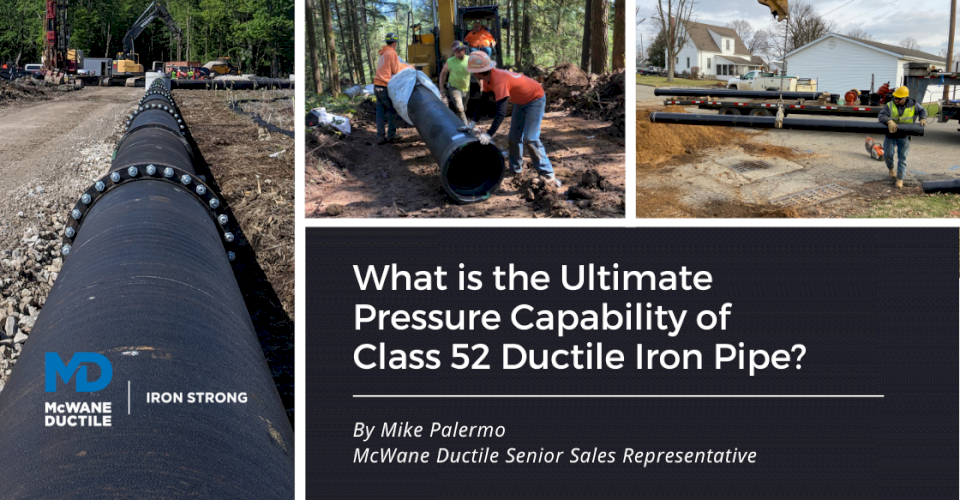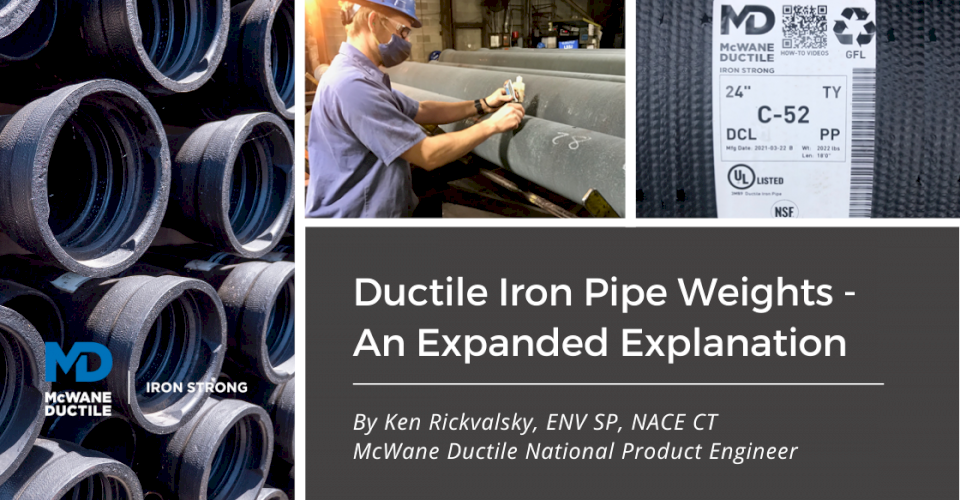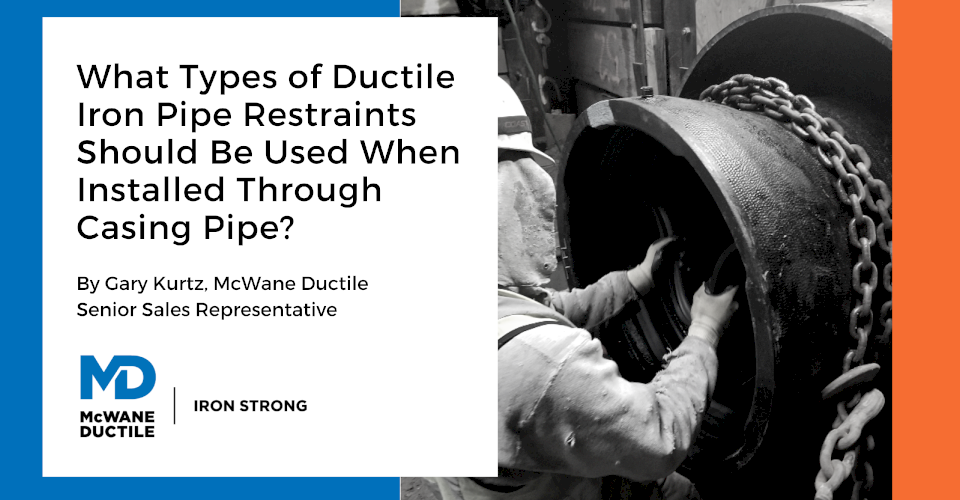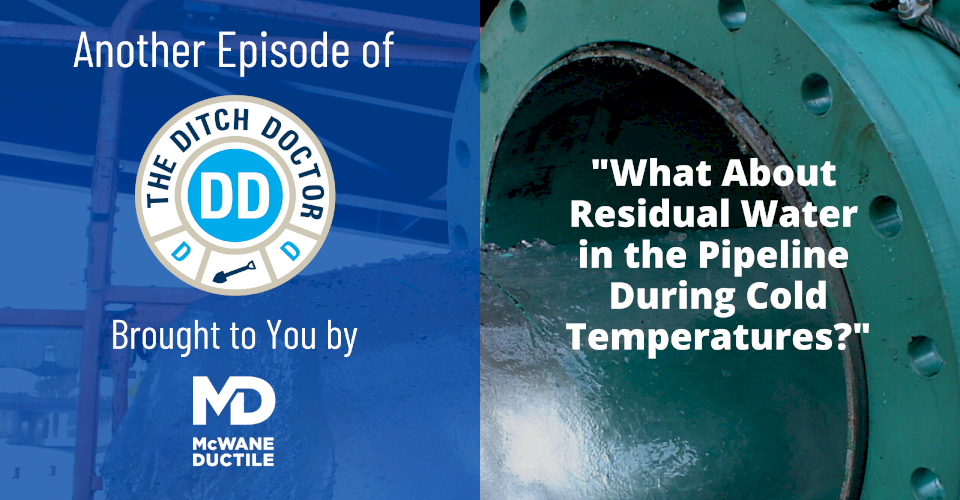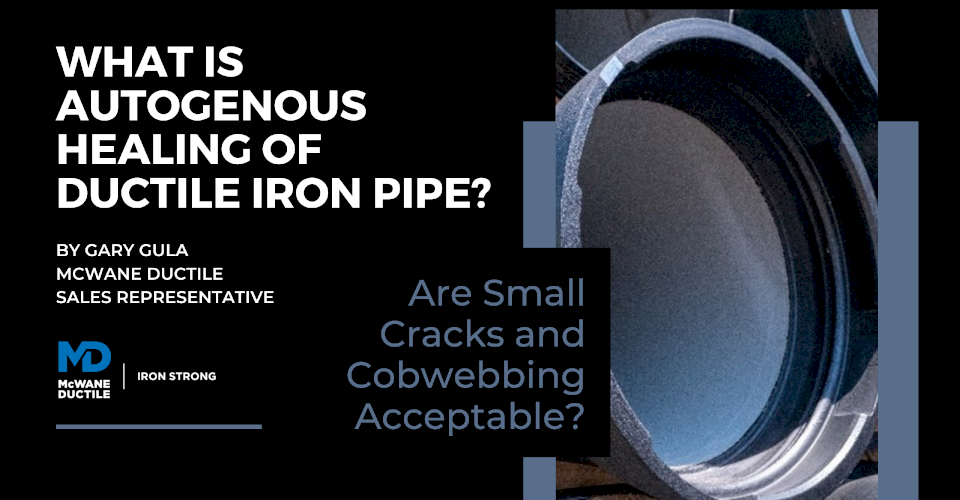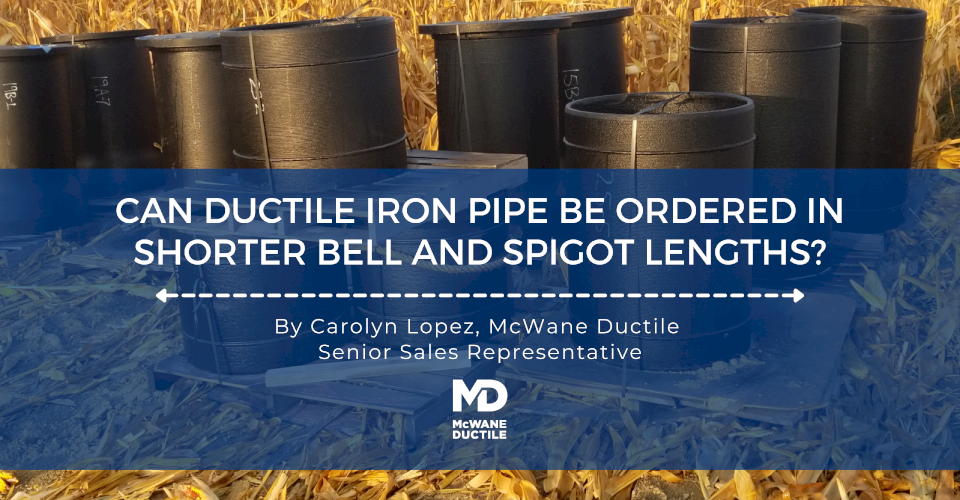-
What is the Ultimate Pressure Capability of Class 52 Ductile Iron Pipe?
05/21/2021 In Products TechnicalCast iron pipe was introduced to the United States in 1816. Since then, numerous other piping materials have been offered and utilized. None were able to supplant cast iron as the leading performer until Ductile iron pipe became available. The introduction of Ductile iron pipe (DI pipe) to the marketplace in 1955 remains among the most significant advancements in the history of the pressure pipe industry. It was quickly recognized as a pipe material with all the established durability of gray cast iron, yet with added strength and resiliency from its innate and lasting flexibility. It was first used for special and severe conditions of high pressure, such as where water hammer and excessive external loads might have existed.
-
How to Use The McWane Pocket Engineer Volume Calculator – the First in a Series of 11
05/07/2021 In Products TechnicalIn recent years, an increasing number of locales and authorities have adopted greater controls of the water used in hydrostatic testing, flushing, and disinfection of utility pipelines, post-installation. Whether from a feeder hydrant to be metered, or when there might be a fee applied on the volume of water used, how does an engineer, contractor, or inspector compute the amount of water needed for these tasks? Sometimes it is required to demonstrate during flushing operations that the water inside a pipeline section has been “exchanged” a designated number of times during the specified flushing. So, just how much water does it take to fill or flush 1,500 feet of 12-inch class 52 DI pipe?
-
Ductile Iron Pipe Weights - An Expanded Explanation
04/16/2021 In Products Services TechnicalThis article takes a deeper dive into concepts outlined in the July 2020 entry prepared by my co-worker Gary Gula, How Much Does Ductile Iron Pipe Weigh and Why Does It Matter to You? Specifically, we will focus on the pipe weight itself, answering questions such as: From where do these weights originate? Why do we show weights on each pipe? How trustworthy are these weights as provided? And, What do these weights mean to me, the pipe customer?
-
What is the Purpose of Calcium Hypochlorite Granules?
03/20/2021 In Environmental & Safety TechnicalCalcium hypochlorite is an inorganic compound added in granular or tablet form added to water to kill germs that can make people sick. When used correctly, this compound destroys germs that can cause numerous health problems. ANSI/AWWA standard C651-14 incorporates essential procedures and requirements for the disinfection of new potable water mains. In this blog, we’ll cover why, when, and how it’s used in the waterworks industry.
-
What Types of Ductile Iron Pipe Restraints Should Be Used When Installed Through Casing Pipe?
03/12/2021 In Installation Products TechnicalAs a companion piece to the Iron Strong Blog entry, What Type of Ductile Iron Pipe Joint Is Right for You? by Scott Rhorick, this article takes a deeper dive into the specifics of installing restrained joint Ductile iron pipe (DI pipe) through a steel casing pipe. While many options are available industry-wide, this article concentrates on using TR Flex® or Sure Stop Gaskets in cased installations.
-
What Type of Ductile Iron Pipe Joint Is Right for You?
03/08/2021 In Installation Products TechnicalThere are a variety of Ductile iron pipe (DI pipe) joints on the market. These different types of joint designs can now allow for additional benefits for various applications. Joining pipe together is just as important as the pipe itself. It sounds like a simple procedure, but the environment in which the pipe is assembled is critical.
-
How to CAD Weld on Ductile Iron Pipe
02/18/2021 In Installation TechnicalThermite welding, often referred to as CAD welding, on Ductile iron pipe (DI pipe) and products is a common practice in our industry today. This welding technique of using heat from an exothermic reaction to produce coalescence between two metals is most often used to bond the Ductile iron joints for cathodic protection or for the opportunity to add a cathodic protection system at a later date. In this Iron Strong Blog, we will discuss when, why, and how to properly CAD weld on DI pipe.
-
Ask the Ditch Doctor - What About Residual Water in Cold Temps?
02/12/2021 In Installation TechnicalDear Ditch Doctor
We recently installed a 15,000-ft 12-inch diameter Ductile iron pipeline with several 6-inch branches off two hydrants. The average depth of cover is 4 feet. The city engineer has expressed a concern that residual groundwater might have entered the pipeline during our installation activities.
-
What is Autogenous Healing of Ductile Iron Pipe? Are Small Cracks and Cobwebbing Acceptable?
02/05/2021 In Products TechnicalSeeing cobwebbing or small cracks in the cement lining of Ductile iron pipe (DI pipe) may raise concern for some and over the years, I’ve had some folks ask me, “Is this acceptable?” And my response is, “Yes, it is, at least to some degree.” Within this Iron Strong Blog, we will discuss Autogenous Healing (au-tog-e-nous), which is defined as the natural process of crack repair that takes place when cement linings come in contact with water.
-
Can Ductile Iron Pipe Be Ordered in Shorter Bell and Spigot Lengths?
01/29/2021 In Installation Products TechnicalHave you ever wondered or asked if it is possible to order shorter lengths of bell and spigot Ductile iron pipe (DI pipe) for your waterworks project or sections within it? The answer is YES; we can help you with those shorter lengths of DI pipe for your project.
Latest Posts
- TR FLEX PIPE: The Truth About Availability and Pressure Ratings 11/14/2024 In Products Technical
- Who Are Circuit Riders and How Can They Assist Your Small Water Utility? 11/05/2024 In Products What is
- Gaskets, Goblins, and Ghouls, Oh My! A Cure from the Ditch Doctor 10/31/2024 In How Products Q&A Technical
- How Can Using Ductile Iron Pipe Save Money on a Water Utility’s Energy Bill? 10/22/2024 In Products Technical

